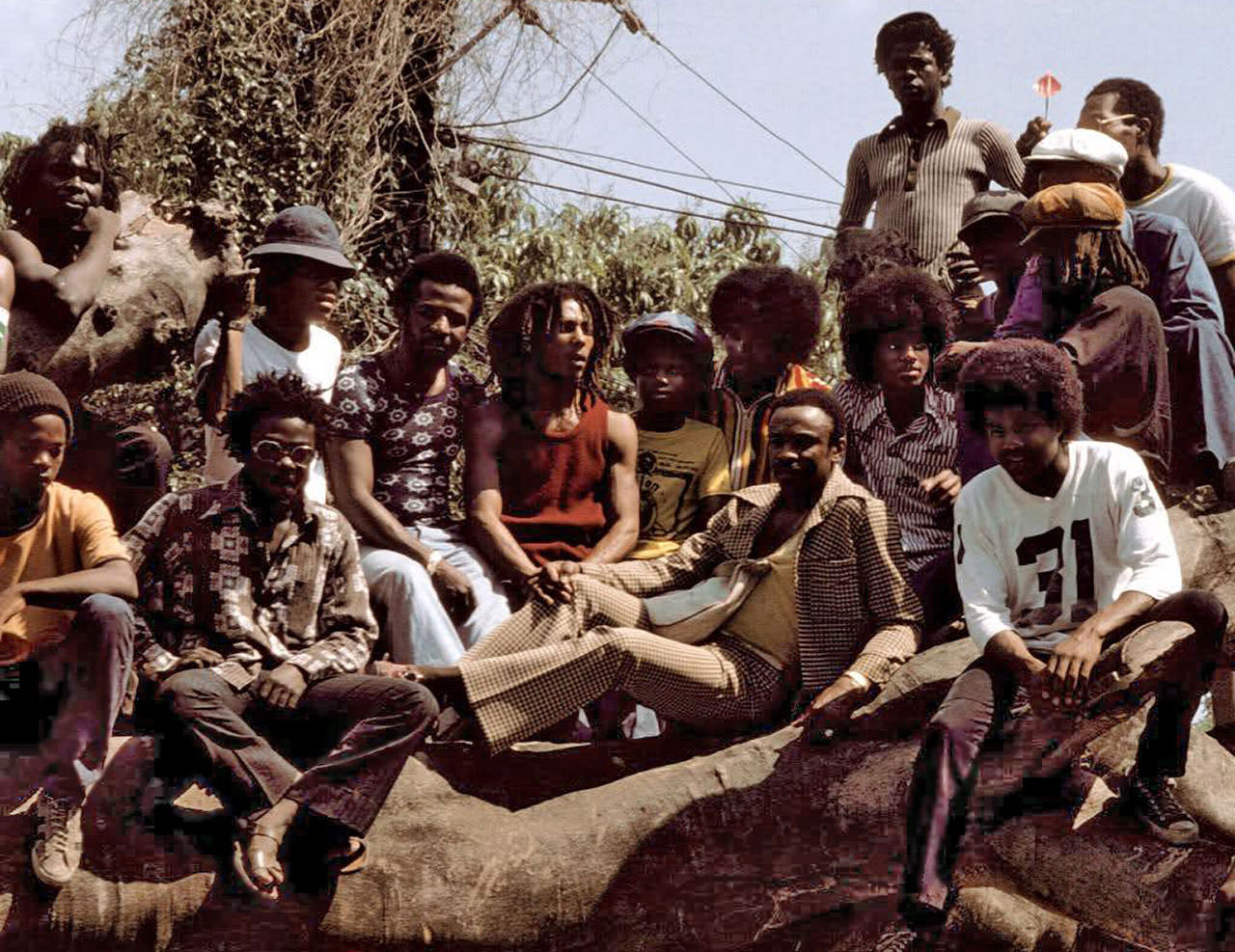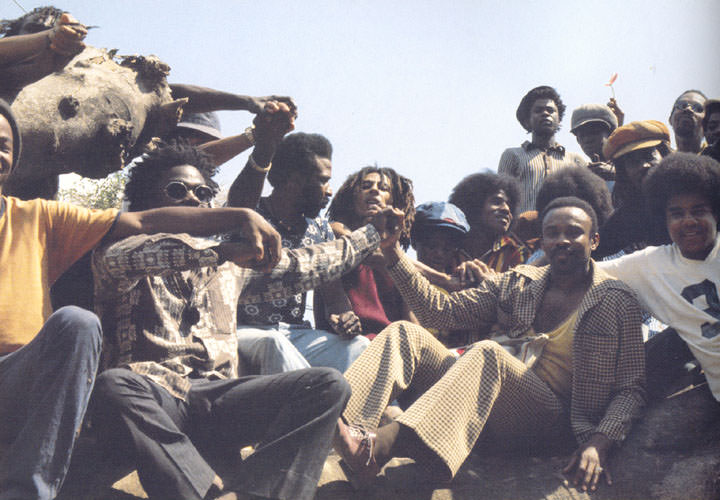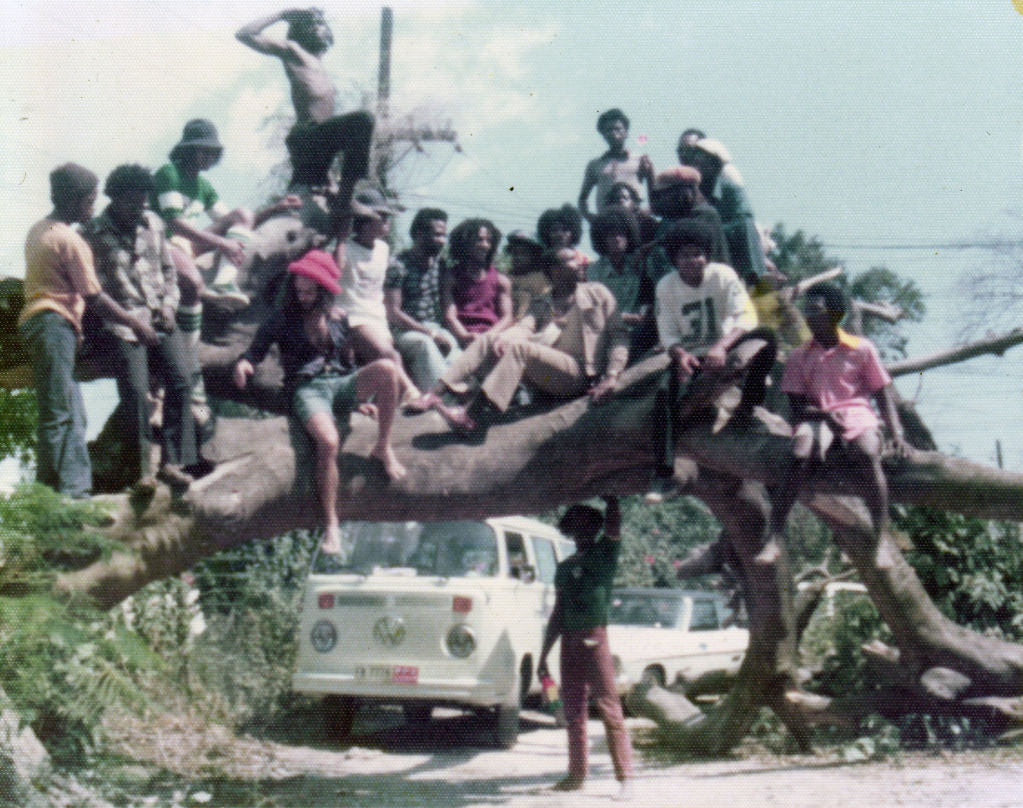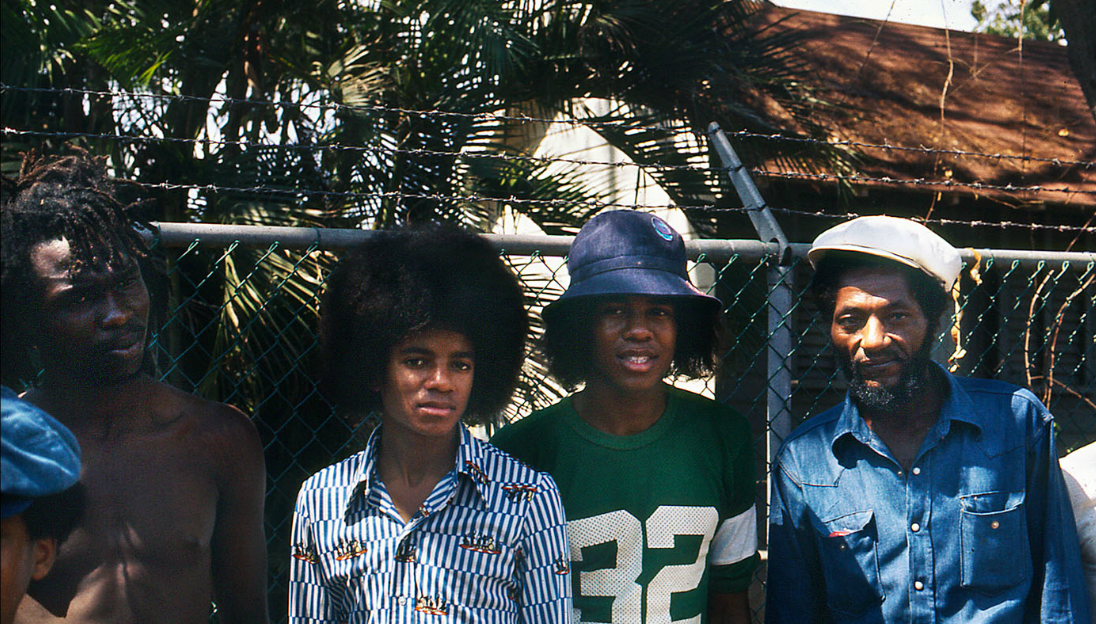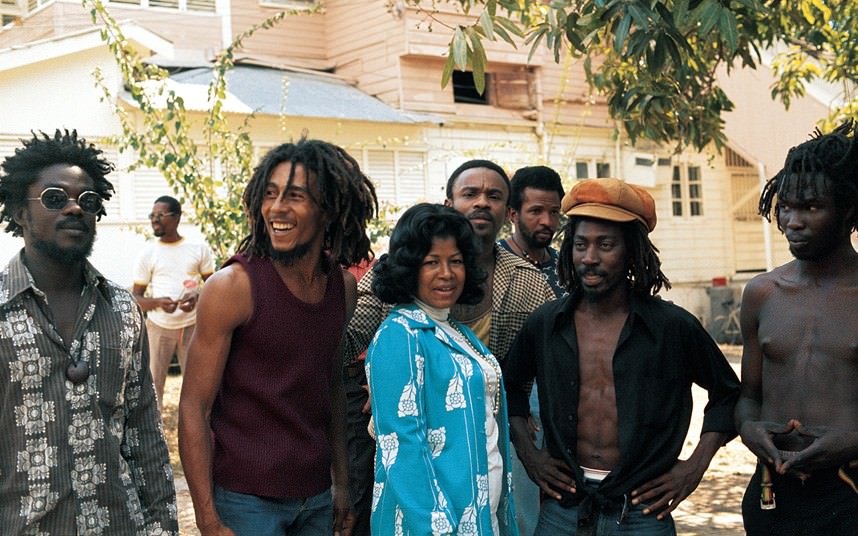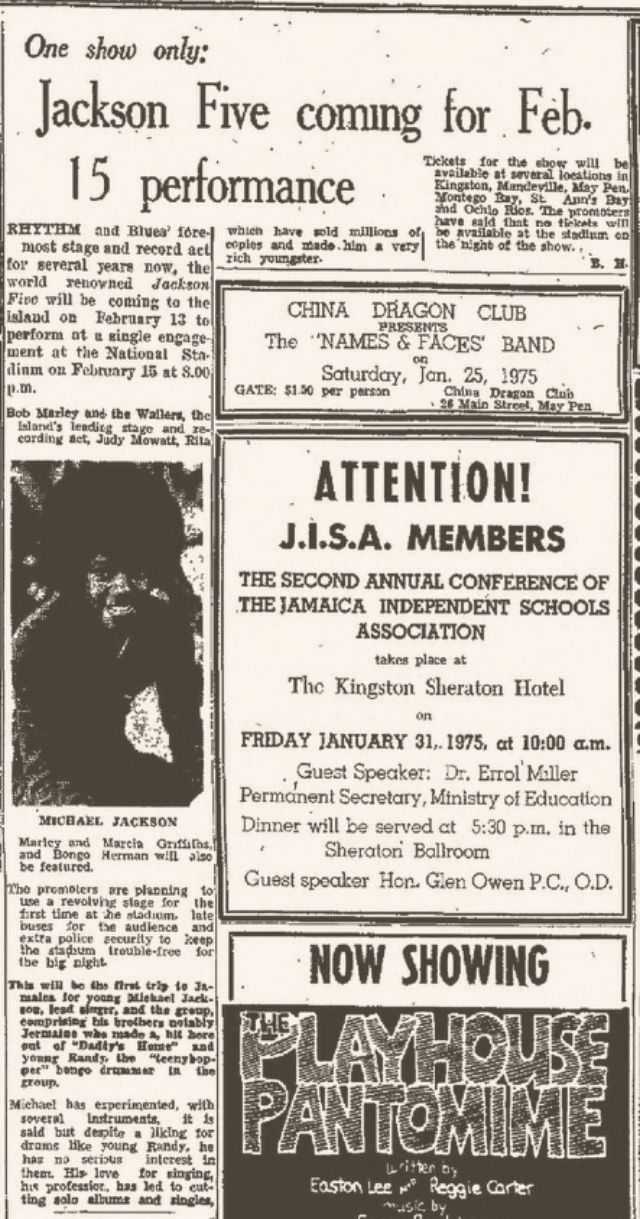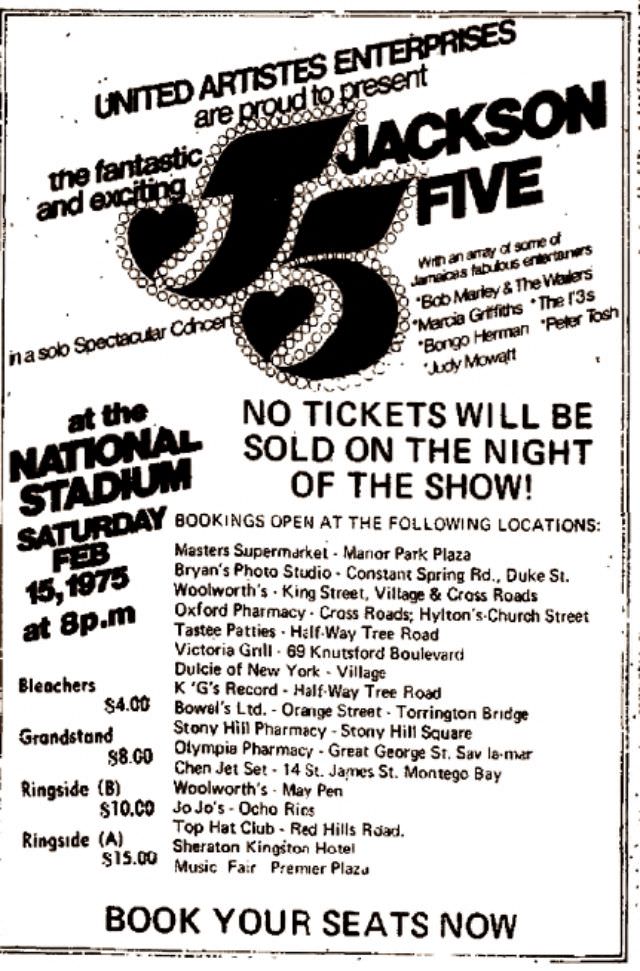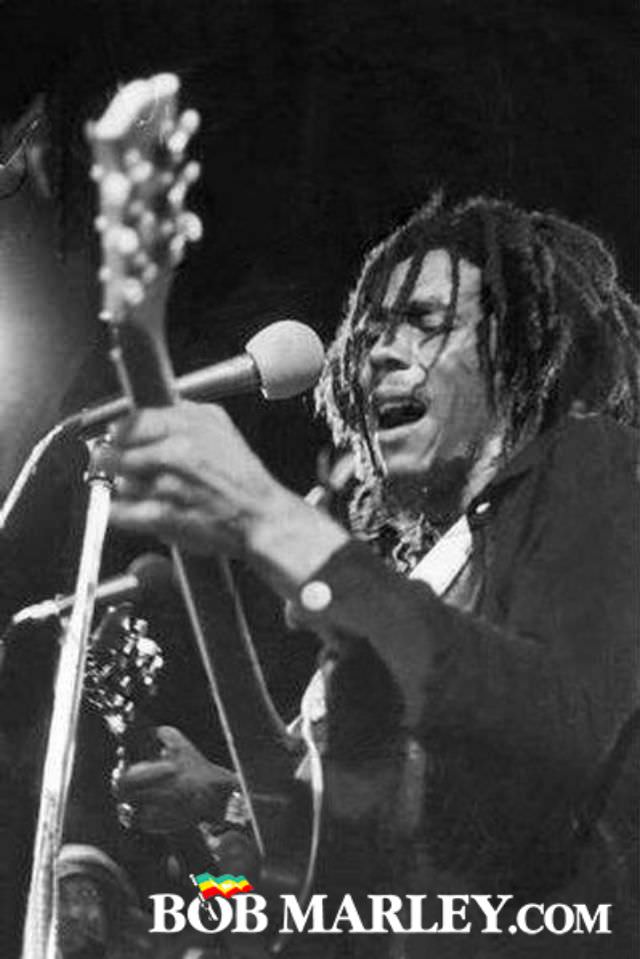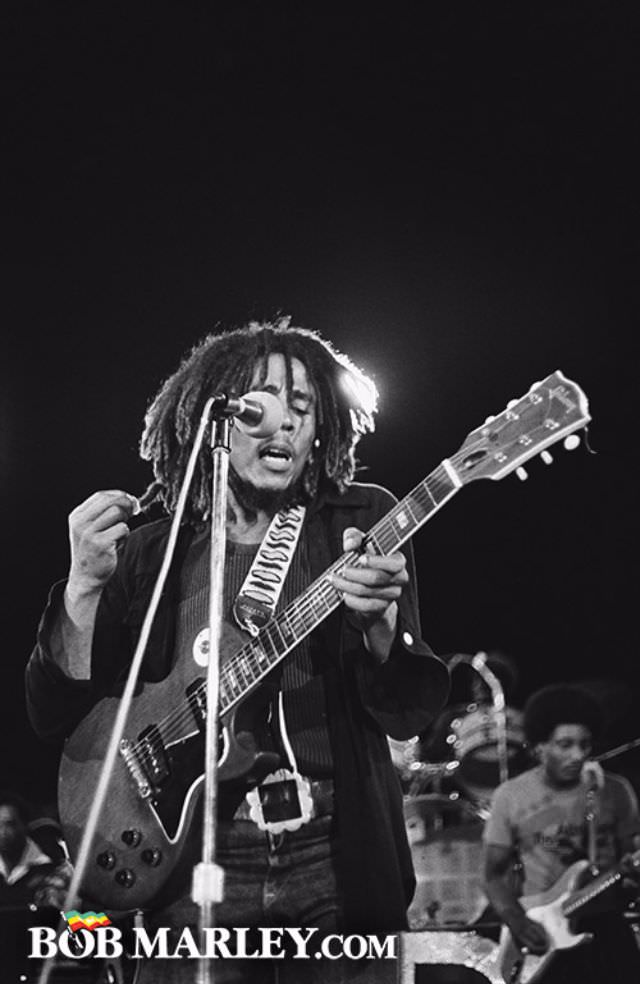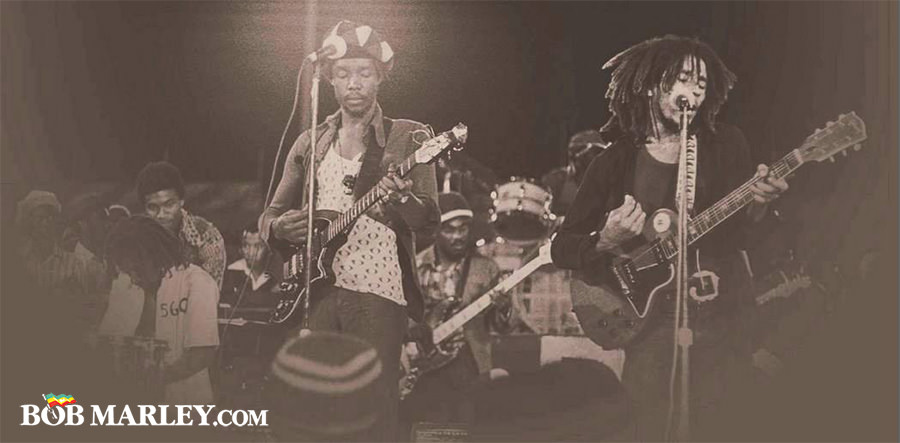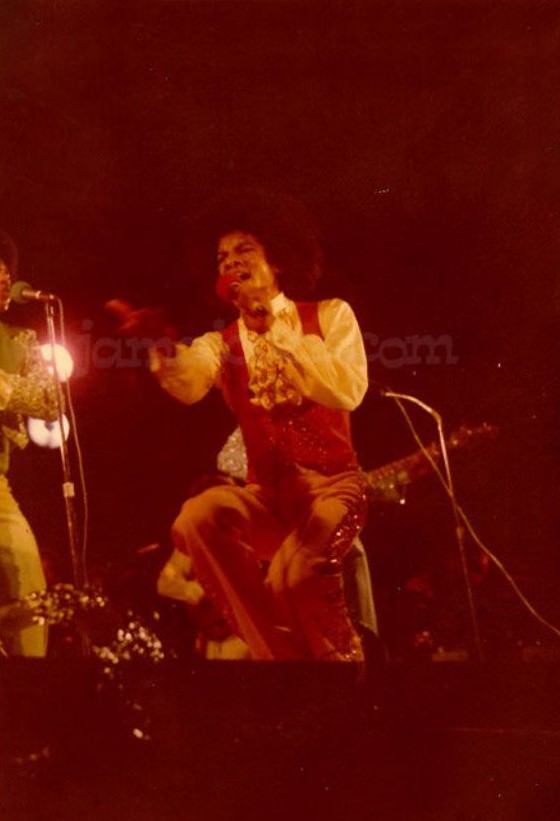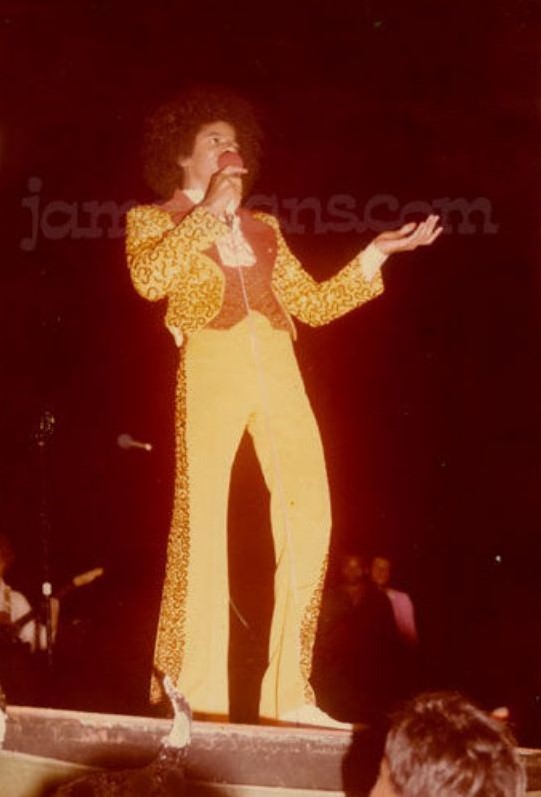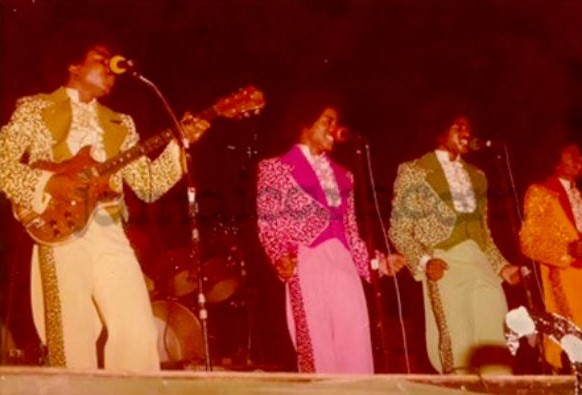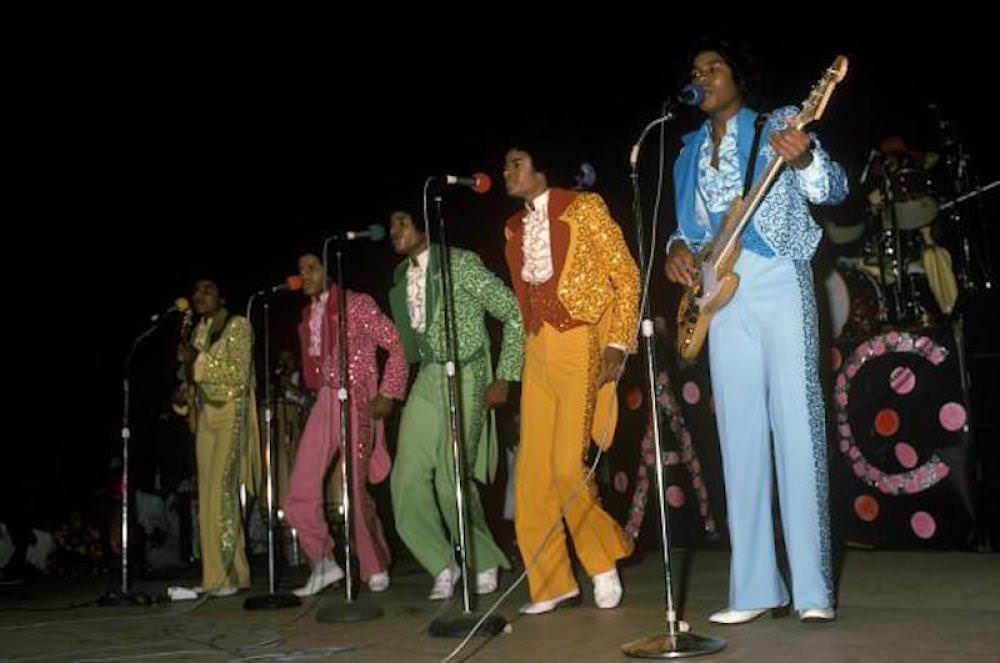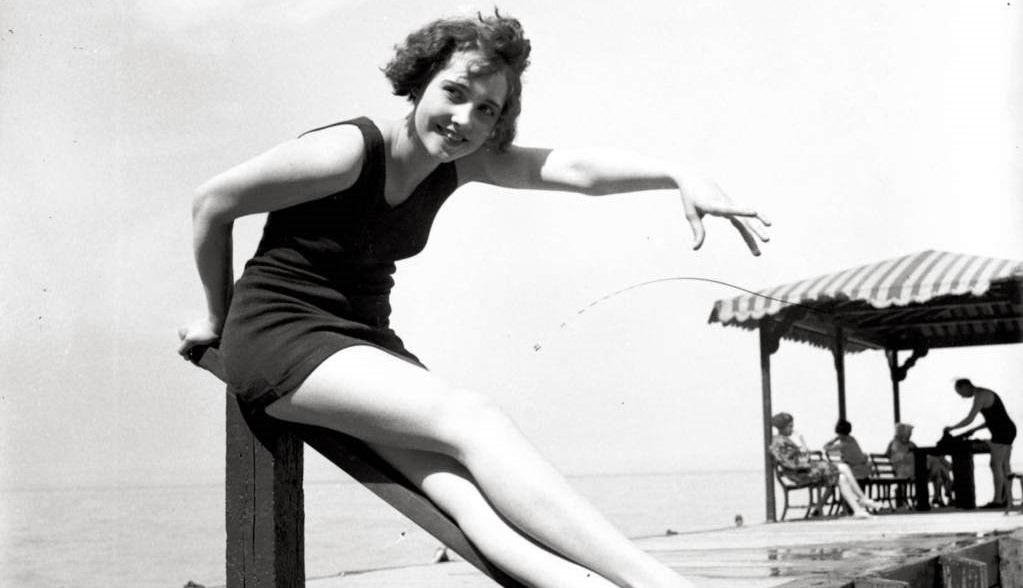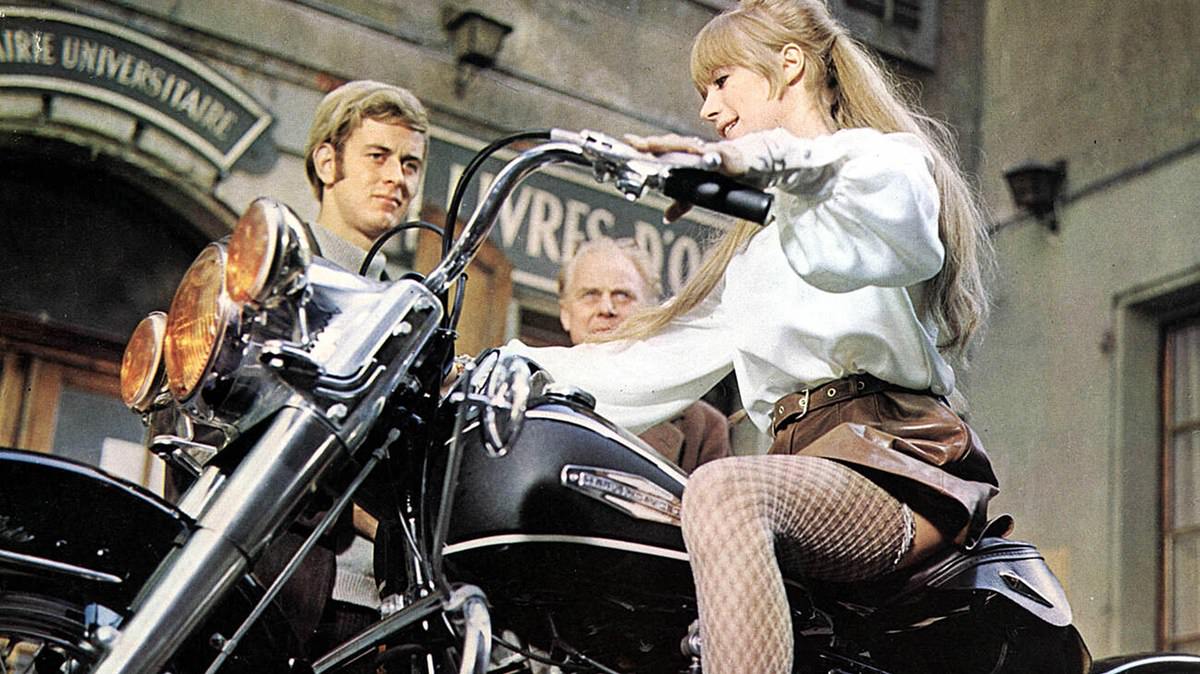In 1975, a rare moment in music history took place in Kingston, Jamaica. Bob Marley, the rising King of Reggae, shared a stage with the Jackson Five, featuring Michael Jackson, who was already being called the King of Pop. The event happened at the National Arena on March 8. Though their careers were on different paths at the time, this single night brought them together before a massive Jamaican crowd.
This was Michael Jackson’s first time visiting Jamaica. He came with his brothers Jackie, Tito, Jermaine, and Marlon as part of the Jackson Five. At this point, the group was still popular but starting to lose ground. They were nearing the end of their time with Motown and would leave the label in 1976. Michael had already shown solo talent, with millions of records sold. Yet in 1975, the group still toured together, bringing their energy, footwork, and hits to every stage.
The show was originally planned for February 15, but was delayed until March 8. It was held at Kingston’s National Arena and promised a packed lineup. Bob Marley and the Wailers were the headlining act. Their lineup at the time included Peter Tosh, Bunny Wailer, Carlton Barrett on drums, Aston “Family Man” Barrett on bass, Al Anderson on lead guitar, Lee Jaffe on harmonica, and a brass section with Bobby Ellis on trumpet and Richard “Dirty Harry” Hall on saxophone. Also performing were Marcia Griffiths, Bongo Herman, and the vocal trio known as the I-Three.
Read more
Fans showed up in huge numbers. They were eager to see two major acts on the same bill. But the event didn’t go smoothly at the start. According to journalist Balford Henry’s review in the Jamaica Gleaner on March 11, seating problems and sound issues delayed the show by nearly two hours. Comedian Ranny Williams had to entertain the restless crowd, but many were already frustrated by the wait.
When the show finally began, the Jackson Five performed first. They took the stage about 90 minutes before the Wailers. Their set was filled with dance routines, bright costumes, and hits that the audience sang along to. Michael Jackson, only 16 at the time, stood out with his sharp movements and clear voice. Though still a teenager, he was already commanding the stage like a veteran.
Once the Jackson Five ended their set, the crowd waited again for Bob Marley and the Wailers. Their arrival came deep into the night. By then, many fans were on their feet, shouting, clapping, and ready to move. The Wailers played a full set, including the hit “No Woman, No Cry,” which had just brought Marley international attention from his Live! album, recorded in London earlier that year.
The atmosphere inside the National Arena turned electric. The crowd danced through the night, moving to the Wailers’ powerful rhythms and Marley’s voice. When the band finally wrapped up after 4:00 a.m., the audience didn’t want it to end. Hundreds stayed behind, still dancing and calling for more music. As Balford Henry described in his report, the stadium was still packed with fans even after the lights came on.
There’s no known recording of a duet or shared song between Bob Marley and Michael Jackson during the event. Still, the fact that they performed on the same stage, in the same place, on the same night, marks a unique point in history. At that moment, both were major stars, but neither had yet reached the height of their fame. Marley was on the edge of becoming a global symbol of reggae and resistance. Michael was moving toward a solo career that would change pop music.
The concert brought together two different styles of music. Reggae, with its roots in Jamaican culture and social struggle, and pop, with its American energy and polished sound. Yet the audience welcomed both. Jamaican fans cheered for the Jackson Five’s fast-paced show and stayed through the early morning to dance with the Wailers’ heavy bass and spiritual lyrics.
Behind the scenes, the show was a challenge for organizers. The late start and technical delays showed how hard it was to manage a concert of this size and scale in Jamaica at the time. But the crowd’s energy didn’t break. They came for the music, and they got it. From early evening until sunrise, the stage at the National Arena stayed alive with sound, color, and movement.
The 1975 show didn’t make headlines around the world. But in Kingston, it left a deep mark. Fans who were there remembered it for years. Two kings of music, one from Trench Town and one from Gary, Indiana, both young and full of power, met in the heart of Jamaica. That meeting, even if short, stayed locked in the memories of those who saw it.
Marley’s band that night included musicians who were key to the Wailers’ sound. Carlton and Aston Barrett held the rhythm tight. Peter Tosh and Bunny Wailer added vocals that echoed with feeling. Al Anderson’s guitar carried solos that rang out in the dark stadium. The horns, played by Ellis and Hall, added sharp blasts of energy between verses. The I-Three, Marley’s female backing singers, filled the songs with harmony.
The Jackson Five, even though facing troubles with Motown, gave a full performance. They didn’t hold back. Their dance steps were clean, their outfits were shining, and their voices were strong. Michael moved with perfect timing, hitting notes that soared above the crowd. Fans waved, clapped, and sang along to songs they knew by heart.
That single night in March 1975 gave the people of Jamaica something rare. It was a live performance by two world-changing artists—one rooted in reggae, the other in soul and pop—brought together in a place where music always speaks louder than anything else.


